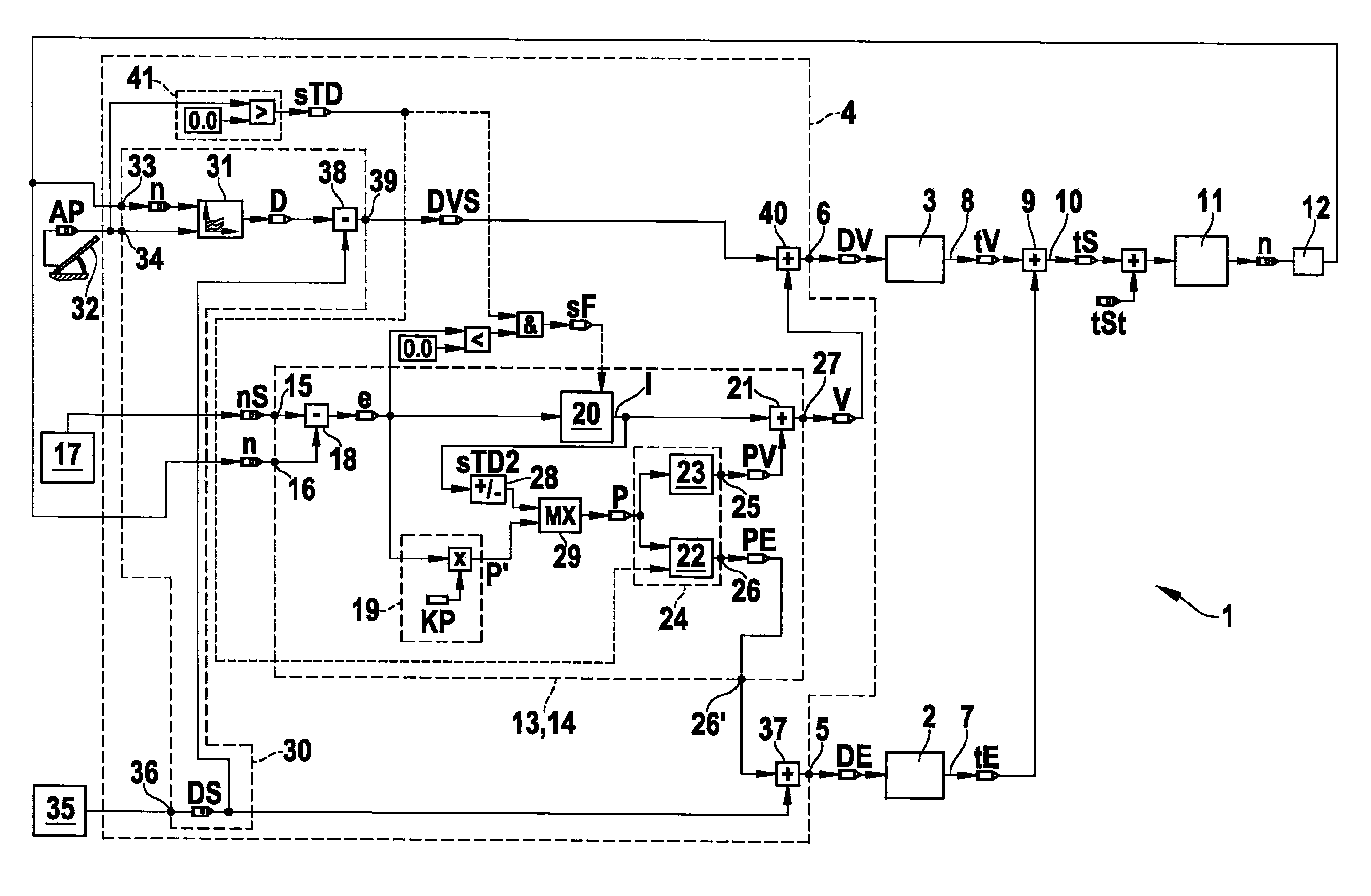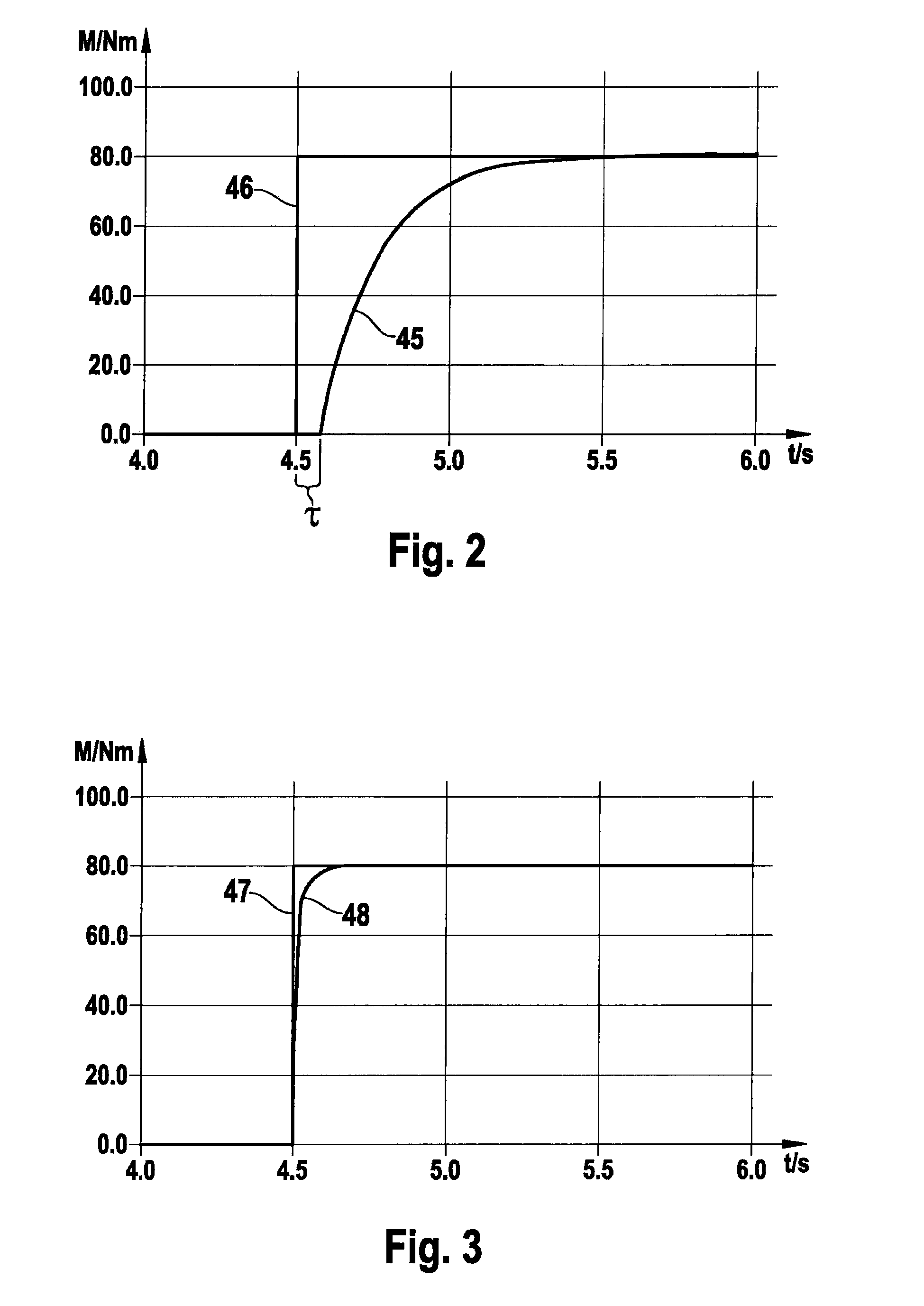Control device and method for controlling a hybrid drive
a control device and hybrid drive technology, applied in the direction of electric controllers, motor/generator/converter stoppers, dynamo-electric converter control, etc., can solve the problems of time delay during data exchange, inability to compensate for speed deviation, increased fuel consumption and exhaust emissions, etc., to achieve rapid retrieval of torque reserve, reduce dynamic response, and high dynamic response
- Summary
- Abstract
- Description
- Claims
- Application Information
AI Technical Summary
Benefits of technology
Problems solved by technology
Method used
Image
Examples
Embodiment Construction
[0023]FIG. 1 shows a block diagram of a simulation of a hybrid drive 1 having two driving motors, the first driving motor being designed as electric motor 2 and the second driving motor as combustion engine 3. Driving motors 2, 3 are driven by a control device 4 which, via an output 5, outputs a first actuating signal DE to electric motor 2 and, via output 6, outputs a second actuating signal DV to combustion engine 3. Driving motors 2, 3 each have an output shaft 7, 8, output shaft 8 of combustion engine 3 and output shaft 7 of electric motor 2 being coupled to one another via a gear unit 9. In this context, added together, electric motor torque tE and combustion engine torque tV form an output torque tS of hybrid drive 1. Connected to gear unit 9 is a common output shaft 10 of driving motors 2, 3 of hybrid drive 1. Output shaft 10 is connected to a mechanical drive unit 11 which is composed, for example, of a differential gear and the driven wheels of a motor vehicle. At mechanica...
PUM
 Login to View More
Login to View More Abstract
Description
Claims
Application Information
 Login to View More
Login to View More - R&D
- Intellectual Property
- Life Sciences
- Materials
- Tech Scout
- Unparalleled Data Quality
- Higher Quality Content
- 60% Fewer Hallucinations
Browse by: Latest US Patents, China's latest patents, Technical Efficacy Thesaurus, Application Domain, Technology Topic, Popular Technical Reports.
© 2025 PatSnap. All rights reserved.Legal|Privacy policy|Modern Slavery Act Transparency Statement|Sitemap|About US| Contact US: help@patsnap.com



